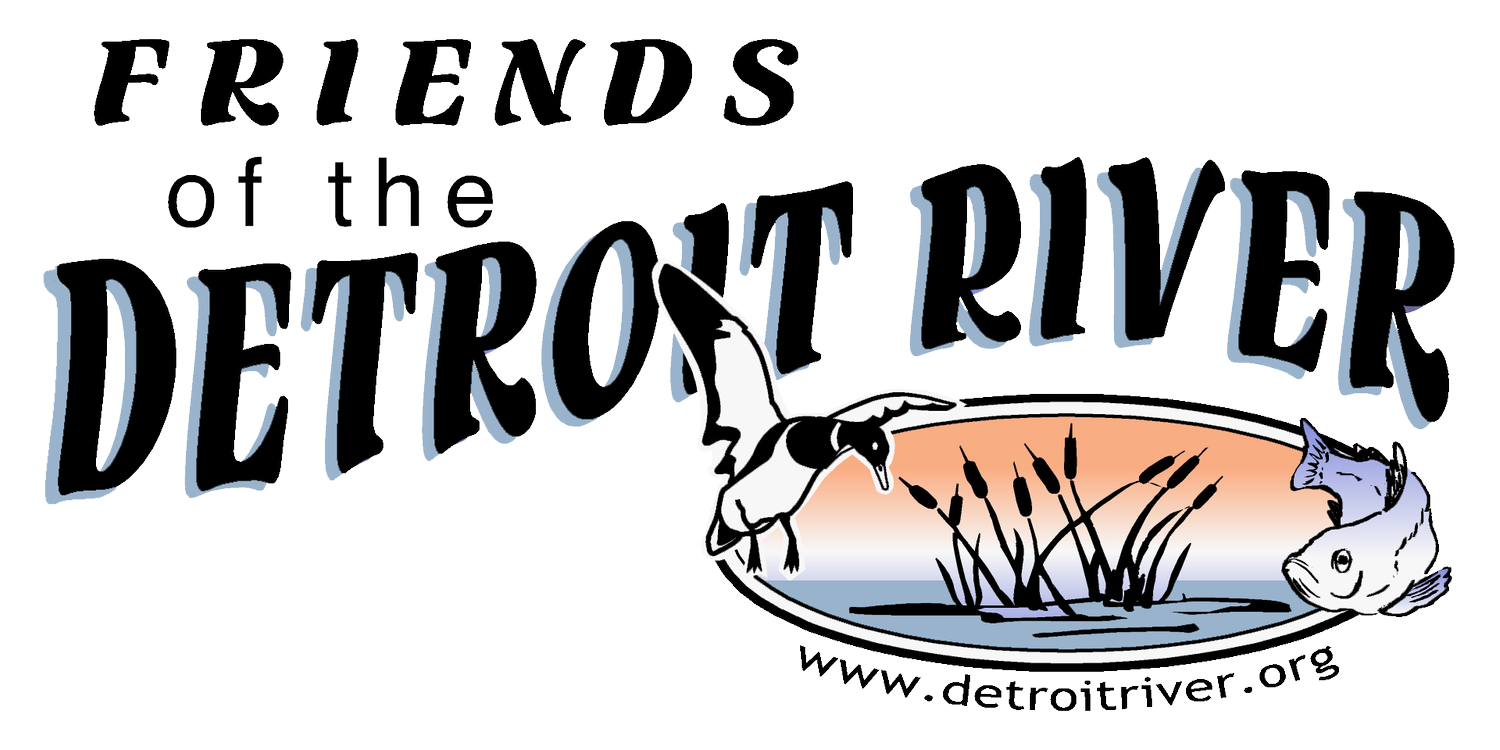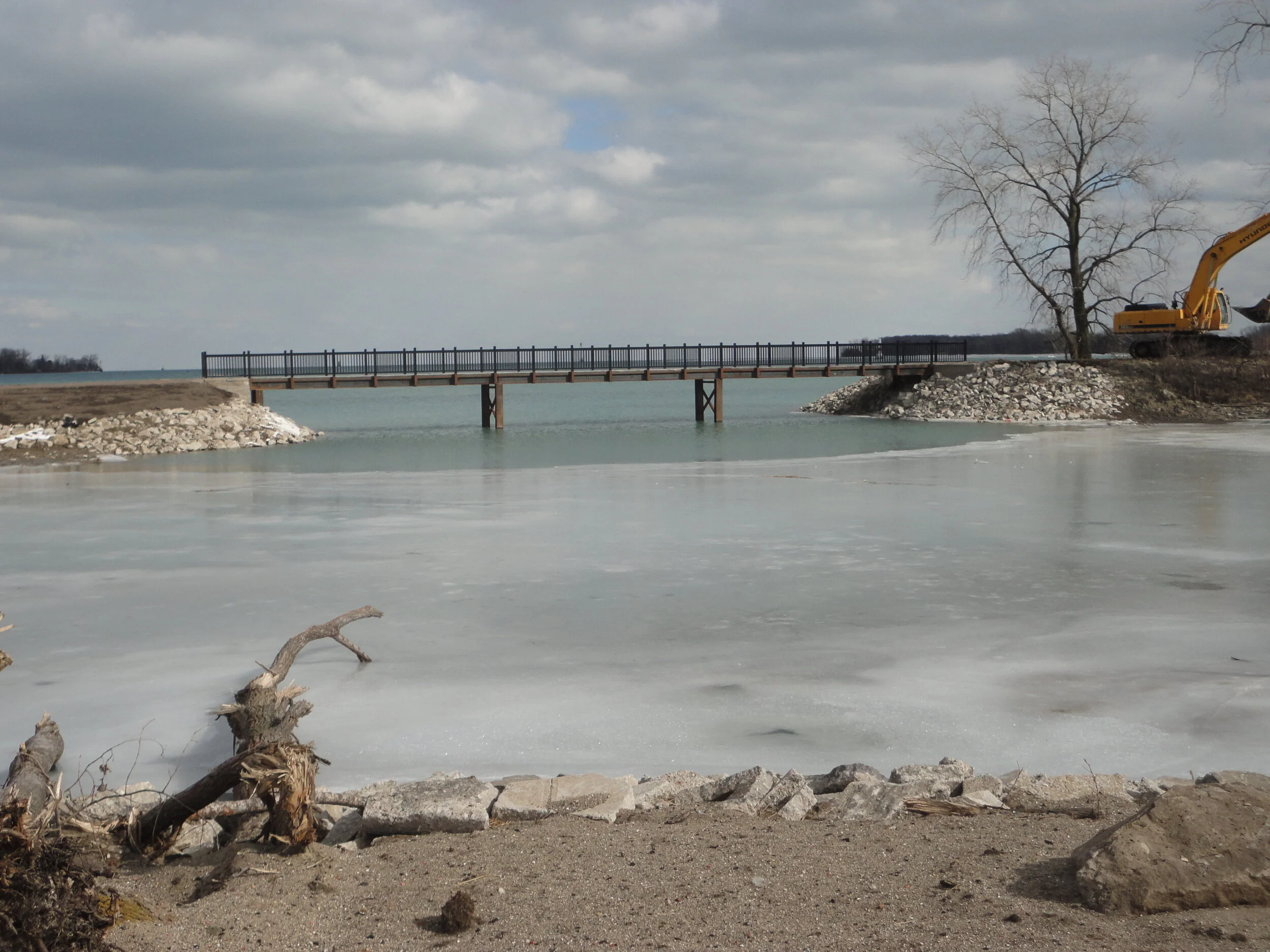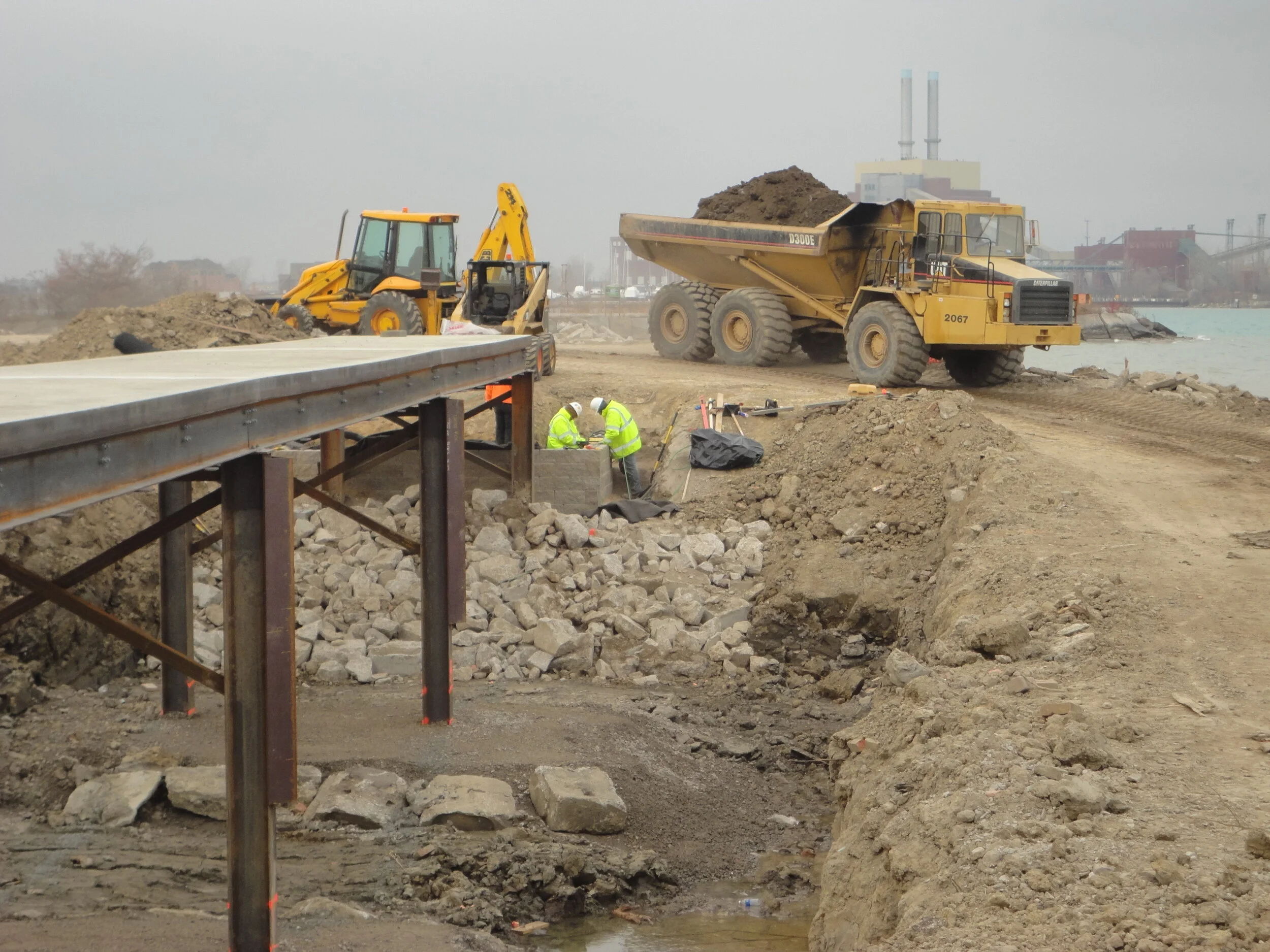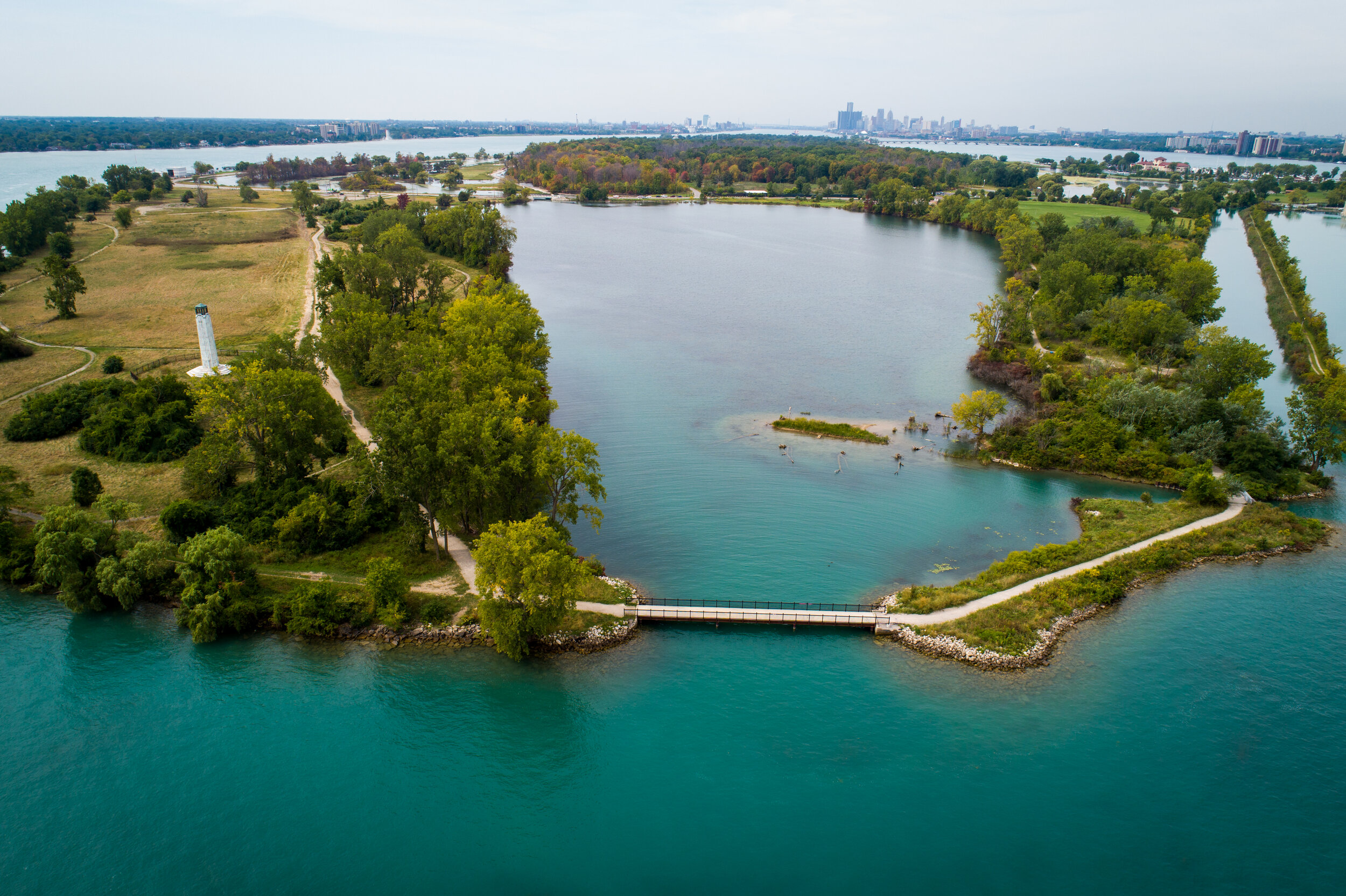Blue Heron Lagoon
Funded by: U.S. Environmental Protection Agency
Project Budget: $1,500,000
Start Date: October 2010
End Date: August 2013
This project involved restoring an entire wildlife community with newly created habitat for the reproduction and rearing of fish, herpetofauna, migrating birds and waterfowl. Specific improvements include breaching the lagoon to the river by constructing a 100-foot-wide opening spanned by a pedestrian bridge and the removal of a drop structure and grates at the former pump station discharge channel (creating a second, smaller opening between the lagoon and river). The new openings allow the lagoon to capture river flow containing non-swimming fish larva into its zooplankton-rich nursery habitat. The openings are accompanied by a new 1.6-acre, upland prairie peninsula hosting two vernal pools and a sand mound for turtle nesting. Surrounding the peninsula, shallow-water emergent wetland and deep-water aquatic plants enhance natural reproduction of Detroit River fish species.
In addition, the project expanded an existing spawning shoal located off the island’s eastern end, about 500 feet upriver. The new rectangular shaped area is 250’ x 45’ and composed of 6 x10-inch cobble stone placed over the river bottom. It is on a relatively flat area in approximately 20 feet of water.
SmithGroup was engaged to assist the project team with design and engineering, and Z Contractors was selected to conduct construction. The project was completed in combination with work at Belle Isle’s South Fishing Pier in the summer of 2013, restoring critical habitat for fish and wildlife. Led by Friends of the Detroit River (FDR), U.S. Environmental Protection Agency, City of Detroit, Michigan Sea Grant and a suite of other partners, this project made significant strides to restore the river's ecological function, structure, and biotic diversity.
To further enhance the Blue Heron Lagoon and South Fishing Pier projects, seven Detroit Public Schools conducted stewardship events. FDR coordinated their shoreline planting events through the US Forest Service Urban Forestry Stewardship program. Litter collection and water quality monitoring events were coordinated through the Alliance for the Great Lakes Adopt-a-Beach™ program. The Belle Isle Nature Zoo (now called Belle Isle Nature Center) and the Michigan Science Teacher Association provided support for all the events. A final shoreline planting event was conducted in August of 2013 by Greening of Detroit.
In addition to a $2,000 plant purchase by the Detroit Recreation Department, volunteers working in the Belle Isle greenhouses provided native plant materials, with genotypes local to the island, on behalf of the Belle Isle Conservancy. Donated materials included various oak species, red twigged and Drummond's dogwood and spicebush. Purchased materials included native shrubs and perennials, including eastern ninebark, cardinal flower, coreopsis, blue lobelia, asters, goldenrod, swamp rose, steeplebush and various sedges.
The students' in-kind service contributed to the Detroit community's match obligation of $30,000. The Detroit Recreation Department (DRD) provided most of the match requirement by furnishing facilities for planning meetings over a two-year span and assisting with construction coordination. Amphibian and bird monitoring were also part of DRD's match contribution. Although this project was largely funded by the federal government, the Detroit community participated throughout the planning and construction process and will enjoy the project benefits as they continue to grow.
According to Keith Flournoy, former Belle Isle Park Manager, "We were able to create a project to enhance existing habitat, provide structure and value for native species, improve the fishing experience for fishing enthusiasts on Belle Isle and within the Detroit River, and best of all, we were able to provide a long-lost connection to the lagoon for fish of the Great Lakes. And with the environmental education opportunities this project provides to our children from our school district and beyond, Belle Isle will continue to be a destination for residents of Detroit for generations to come."
The Great Lakes and coastal resources like the Detroit River are Michigan's most valuable natural resources and are fundamental to our identity and quality of life. The Great Lakes have extraordinary ecologic and economic value for Michigan providing:
jobs for more than 800,000 Michigan residents
a world-renowned commercial and sport fishery with an annual value of more than $7 billion
a $12.8 billion tourism industry
water resources for manufacturing industries, which produce 60 percent of our nation's steel and automobiles
harbors and marinas that support a $2 billion annual recreational boating industry
The Blue Heron Lagoon restoration project provided significant steps to further enhance this valuable resource.












